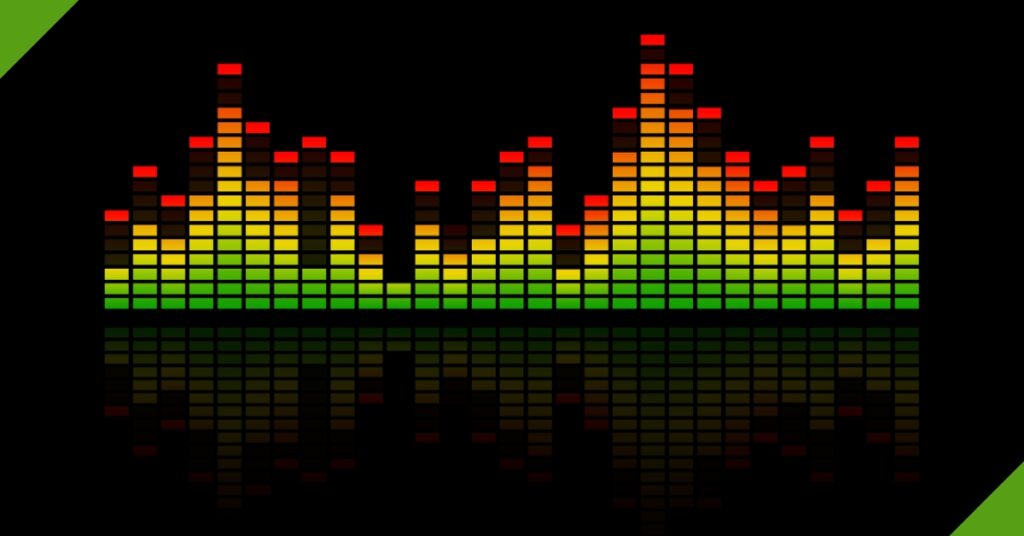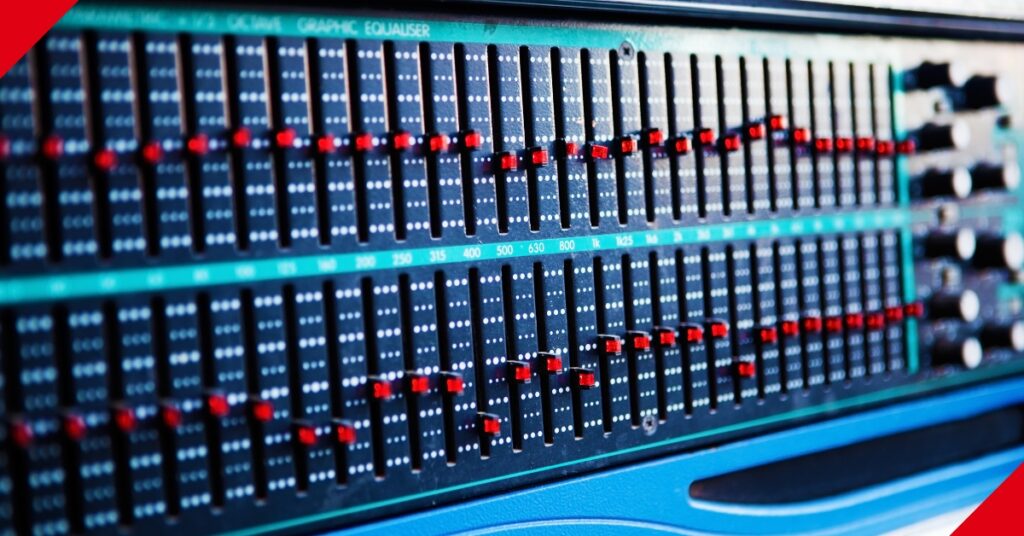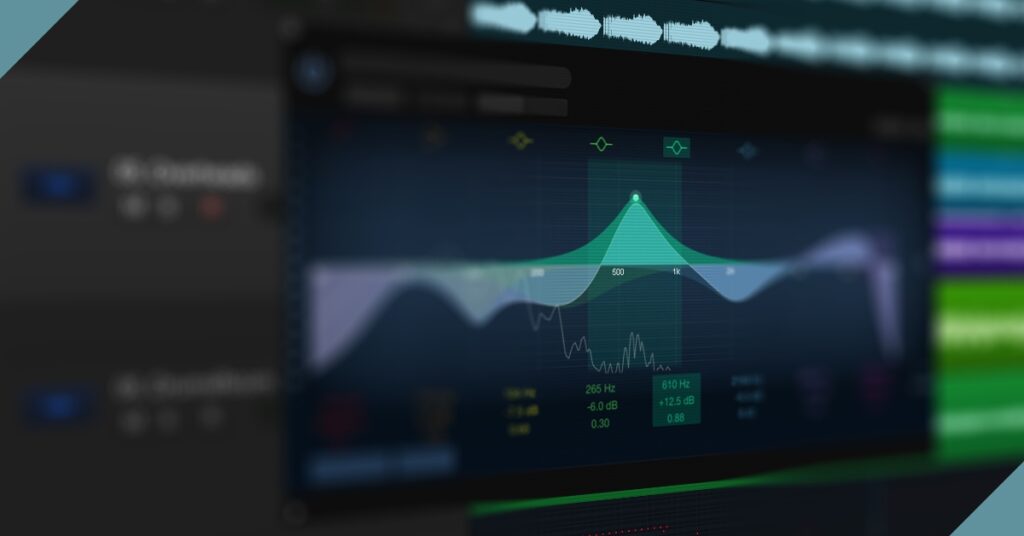
Understanding the differences between parametric vs graphic EQ can help you make an informed choice for your audio mixing needs. Both types of equalizers are essential tools in audio processing, enabling precise frequency balance adjustments.
- Parametric EQ: Offers adjustable parameters like center frequency, gain, and bandwidth, allowing for meticulous sound shaping.
- Graphic EQ: Features fixed frequency bands with slider controls for quick and straightforward adjustments, ideal for live sound environments.
Each type serves unique purposes, catering to different scenarios in both live performances and studio production. Let’s now dive deeper into the subject of parametric vs graphic eq, so you can know when and how to use each of them. Read on!
- Understanding Equalization in Audio Engineering
- Exploring Graphic Equalizers: Functionality and Benefits
- Understanding Parametric Equalizers: Features and Benefits
- Graphic vs. Parametric Equalizers: Comparison Guide
- Choosing the Right Tool: Graphic vs. Parametric Equalizers
- FAQs (Frequently Asked Questions)
- Final Thoughts
Understanding Equalization in Audio Engineering

Equalization in audio refers to the process of adjusting the balance between frequency components. It is a fundamental tool in sound production, crucial for shaping the tonal quality of audio signals. It’s overall goal is to improve clarity, depth, and make a mix sound more balanced and cohesive. Here is an overview of the role of eq in sound mixing:
- Frequency Control: EQ allows precise manipulation of different frequencies, enhancing or reducing specific elements within a mix.
- Creative Shaping: Engineers use EQ to craft unique soundscapes. For example, cutting out the lows an highs of a vocal track while boosting the mids, can create that telephone effect we are all familiar with.
- Corrective Adjustments: Addressing problematic frequencies, such as removing harshness or boosting clarity, results in a cleaner and more polished sound.
Exploring Graphic Equalizers: Functionality and Benefits

Graphic equalizers are essential tools in the audio world, particularly in live sound setups. Their primary advantage lies in their straightforward design, featuring fixed frequency bands. Each band comes with a slider that allows users to adjust the gain at the specified frequency. Let’s dive deeper into how they work and why they are so valuable.
Graphic Equalizer for Live Sound
- Tackling Microphone Feedback Like a Pro: Imagine you’re at a live concert, and suddenly, an ear-piercing squeal disrupts the music. That’s microphone feedback, every sound engineer’s nemesis. Graphic equalizers excel in this arena. With their precise control over critical frequencies, they can zero in on the offending pitch and reduce it without significantly altering the overall sound.
- Simplicity Meets Efficiency: One of the standout features of graphic EQs is their ease of use. During a live performance, time is of the essence. Engineers need to make quick adjustments, and the visual representation of the sound spectrum on a graphic EQ allows for fast, intuitive changes. It’s like having a dashboard for your sound, where you can instantly see and tweak the levels. This user-friendliness is invaluable when you’re in the heat of a live show, dealing with unpredictable challenges.
- Customizing Sound for Any Venue: Every venue has its unique acoustic signature. A small club will sound drastically different from a sprawling outdoor festival. Graphic equalizers enable audio engineers to tailor the sound to fit these diverse environments. For example, in a large, echoey hall, reducing certain frequency bands can help cut down on reverb, creating a more focused sound.
Limitations to Consider with Graphic Equalizers
While graphic equalizers are user-friendly and effective in live sound environments, they do come with certain limitations that are worth considering.
- Fixed Frequency Bands: The 31-band graphic EQ configuration, while detailed, offers fixed frequency bands. This setup can restrict flexibility, as users have less control over fine-tuning specific frequencies. In scenarios where ultra-precise adjustments are needed, this can be a drawback.
- Band Overlap: Adjusting one band can sometimes affect adjacent bands, leading to band overlap. This can make achieving precise tonal shaping more challenging. Unlike parametric EQs, where you can adjust parameters like the Q factor and center frequency, graphic EQs provide a more rigid framework, which might not suit every situation.
- Limited Tonal Shaping Capabilities: The simplicity of graphic EQs, which is one of their strengths, also limits their ability to create complex tonal shapes and curves. Parametric EQs allow for more detailed adjustments, enabling finer control over the sound. This can be particularly important in studio settings or when dealing with intricate audio work.
Understanding Parametric Equalizers: Features and Benefits

Parametric equalizers are probably the most powerful tool in sound production for manipulating audio. Unlike graphic equalizers, which provide limited control over specific frequency bands, parametric EQs allow users to adjust multiple parameters, giving them greater flexibility in shaping audio.
Key Features of Parametric Equalizers
Here are some of the main features that set parametric equalizers apart:
- Adjustable Center Frequency: With a parametric EQ, you can choose the exact frequency you want to modify. This level of precision is especially useful when dealing with specific instruments or vocal elements in a mix. For instance, if a vocal track has a problematic frequency that makes it sound harsh, you can zero in on that frequency and adjust it without affecting the rest of the vocal range.
- Gain Control: In addition to selecting the center frequency, parametric EQs also let you increase or decrease the volume at that frequency. This means you can boost certain elements for clarity or cut problematic frequencies to create a more balanced sound. For example, boosting the low-mid frequencies on a bass guitar can add warmth and fullness to the track.
- Bandwidth (Q Factor) Adjustment: The Q factor determines how wide or narrow the range of frequencies affected by your adjustments will be. By tweaking this parameter, you can target specific resonances or tonal characteristics without impacting surrounding frequencies.
Why Q Factor Matters in Bandwidth Adjustment
The Q factor plays a crucial role in determining how your gain changes will affect different frequencies. Here’s why it matters:
- High Q Factor: When you set a high Q value, you’re targeting a narrow band of frequencies. This is ideal for making precise adjustments without influencing nearby sounds. For example, if there’s an annoying resonance in a guitar track, you can use a high Q setting to isolate and reduce it without affecting the overall tone.
- Low Q Factor: On the other hand, when you lower the Q value, you’re widening the range of frequencies being affected. This can be useful for broader tonal adjustments where you want to boost or cut multiple instruments at once. When it comes to mastering, a lower Q setting is ideal.
Practical Applications of Parametric Equalizers
Given their flexibility and precision, here are some practical scenarios where parametric EQs shine:
- Studio Recording: Engineers often rely on parametric EQs during tracking sessions to sculpt individual sounds before they even hit the mixing stage.
- Mixing: When balancing various instruments or vocals within a mix, using a parametric eq allows for fine-tuning each element’s presence without resorting to drastic changes elsewhere.
- Live Sound Reinforcement: When mixing a live show, parametric eq is the go-to for fine-tuning each individual instrument within the mix.
Graphic vs. Parametric Equalizers: Comparison Guide
When comparing graphic and parametric equalizers, the distinctions in functionality and application scenarios become evident.
Graphic EQ |
Parametric EQ |
|
|---|---|---|
| Adjustable Frequency Bands | ||
| Ease Of Use | ||
| Flexibility | ||
| Creative | ||
| Cost-Effective | ||
| Live Sound Tuning | ||
| Live Sound Mixing | ||
| Studio Mixing/Mastering |
Graphic EQs:
- Fixed Frequency Bands: Typically feature 31 fixed bands, each controlled by a slider.
- Ease of Use: Straightforward operation, making them ideal for quick adjustments.
- Live Sound Advantage: Highly effective in live performance settings to address feedback issues.
- Cost-Effective: Generally less expensive, suitable for budget-conscious setups.
Parametric EQs:
- Adjustable Parameters: Offer control over center frequency, gain, and bandwidth (Q factor).
- Precision Control: Ideal for detailed tonal shaping and corrective sculpting of sound.
- Studio Flexibility: Favored in studio environments for subtle adjustments without affecting other frequencies drastically.
- Complex Tonal Shapes: Capable of creating intricate tonal curves with fewer bands.
Choosing the Right Tool: Graphic vs. Parametric Equalizers
Selecting between graphic and parametric EQ depends on your specific audio needs. But, we’ve made the choice simple for you. Here is how you should decide.
Live Performance Settings
Graphic EQs excel in live environments. When ringing out FOH speakers and on-stage monitors, there is no better option. With a straightforward interface, sound engineers can make rapid adjustments on-the-fly, ensuring optimal sound quality throughout the performance.
Studio Production
Parametric EQs shine in studio settings where precision is paramount. The ability to adjust multiple parameters provides greater flexibility for fine-tuning recordings. This precise control is invaluable when sculpting the perfect mix, allowing engineers to enhance specific elements without introducing unwanted artifacts.
Summary: If you are tuning out speakers at a live show use a graphic eq. If you are mixing a song in the studio or a live performance, use a parametric eq. It’s as easy as that!
FAQs (Frequently Asked Questions)
Want to take your mixing to the next level? Check out our EQ Cheat Sheet to learn how to properly EQ dozens of instruments. Happy Mixing!
Final Thoughts
Having both parametric and graphic equalizers in your audio toolkit will cover you for different situations. It’s important to understand that neither type of EQ is better than the other; they each have specific roles depending on the audio task at hand. So, next time you’re faced with an audio challenge, consider the context and purpose of your work, and let that guide your choice between these powerful audio mixing tools.
If you found this guide helpful, please consider subscribing to our blog for more music production tips, product reviews, and buying guides. Also, you can support new content by contributing to our tip jar.
“Some of the links within this article are affiliate links. These links are from various companies such as Amazon. This means if you click on any of these links and purchase the item or service, I will receive an affiliate commission. This is at no cost to you and the money gets invested back into Audio Sorcerer LLC.”



